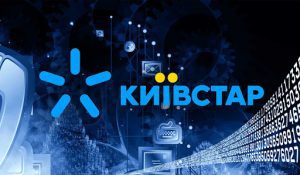
Kyivstar mobile operator has opened the 500th communication outlet in Illintsi, Vinnytsia region.
The company’s press service said on Friday that Kyivstar plans to develop its retail chain in small residential locations and some residential areas in big cities this year. Such a strategy is conditioned by the decision to get closer to the customers and make its services more accessible.
The mobile operators plans to extend its retail chain to 544 outlets by the end of 2020.
“We have resumed work of all 500 outlets. The number of customers and the quantity of services are growing. Around 645,000 subscribers addressed Kyivstar’s outlets in March and April, which were working in a special regime, and in May-June this index was more than 700,000 visitors,” the press service cited Retail Sales Director of Kyivstar Olha Smyslenova.
Around 14 million subscribers address Kyivstar’s outlets annually, most of them need consultation or service. In 2019, the service of replacing Sim card with Usim card was provided 2.5 million times.
Kyivstar is the largest Ukrainian telecommunications operator. It provides communications and data services based on a wide range of mobile and fixed-line technologies, including 3G. By the end of 2018, 26.4 million mobile subscribers and about 0.9 million fixed-line Internet customers used its services.
The shareholder of Kyivstar is the international group VEON (formerly VimpelCom Ltd.). Shares of the group are listed on NASDAQ Stock Exchange (New York).

The memorandum of intent for the joint use of the passive and active infrastructure of their mobile networks has been signed by the mobile communications operators Kyivstar and Vodafone Ukraine.
According to a joint press release of the companies issued on Thursday, sharing telecommunications infrastructure will enable the parties to accelerate the deployment of 4G networks in rural areas and on highways.
The memorandum takes into account the use of not only communication channels, but also towers, as well as other equipment. Cooperation using telecom infrastructure will enable operators to avoid duplication in the process of building networks, which will accelerate the provision of access to 4G/LTE services for subscribers living in sparsely populated areas.
Now Kyivstar and Vodafone Ukraine are identifying mobile network sections and settlements for sharing infrastructure. The operators plan to begin practical implementation of the memorandum in November-December 2020 after the approval of the project by government bodies.
“Partnership and cooperation in the use of mobile networks will allow the operators to accelerate the bridging of the digital gap between megacities and villages, and to fulfill their investment plans despite the decrease in market income. We proposed that all mobile operators of Ukraine join the memorandum,” Kyivstar President Alexander Komarov said.
He said that the memorandum is open to all players who want to develop new mobile technologies on mutually beneficial conditions.
“Such unbiased and seemingly insurmountable circumstances as lockdown and the lack of roaming revenues could make adjustments to the implementation of coverage. But we understand the importance of building infrastructure as soon as possible to ensure equal access to digital services. Sharing networks will make our investment more effective,” CEO of Vodafone Ukraine Olha Ustinova said.
In her opinion, this will also give the operator the opportunity not only to adhere to the obligations assumed for coverage, but also to bring high-speed Internet to small villages with a population of less than 2,000 people.
For its part, the National Commission for Communications and Informatization Regulation (NCCR) also welcomes cooperation between operators in building networks.
“We are pleased that Vodafone Ukraine supported this idea of the NCCR. We welcome cooperation between operators, in particular in building networks,” Chairman of the commission Oleksandr Zhyvotovsky said, expressing the hope that other operators will also join the memorandum and the process of mutually beneficial cooperation.
According to him, active sharing is an effective way to optimize the costs of building and maintaining networks and quickly covering the territory of Ukraine with a high-quality signal and mobile Internet access and fulfilling licensing conditions in the 900 MHz band.
The signing of the memorandum was supported by the Ministry of Digital Transformation of Ukraine.
In accordance with the decree of the President of Ukraine on some measures to improve access to mobile Internet, mobile operators should provide 4G communications to settlements with a population of 2,000 or more, as well as major roads in the coming years.

Kyivstar mobile operator has extended 4G network coverage in 20 regions of Ukraine, connecting 344 more settlements, the company’s press service has said.
The operator, in particular, connected the towns of Tokmak (Zaporizhia region), Soledar (Donetsk region), Svaliava (Zakarpattia region), Pogrebysche (Vinnitsa region), Belz (Lviv region), as well as hundreds of small villages.
Currently, according to the company, due to the increase in 4G communications territory, more than 80% of Ukrainian residents can take advantage of high-speed mobile Internet access in the Kyivstar network.
Since the launch of the 4G communications by the operator in April 2018, more than 10 million subscribers have already taken advantage of the new technology services. During this period, the consumption of mobile Internet in the Kyivstar network increased from 325 to 649 PB.
In the 4G communications network, each subscriber on average uses 10 GB of traffic per month, which is almost twice as much as on a 3G network.
Kyivstar is the largest Ukrainian telecommunications operator. It provides communications and data services based on a wide range of mobile and fixed technologies, including 3G. By the end of 2018, its services were used by about 26.4 million mobile subscribers and about 900,000 fixed Internet customers.
The shareholder of Kyivstar is the international group VEON (formerly VimpelCom Ltd.). The shares of the group are listed on the NASDAQ Stock Exchange (New York).

Kyivstar mobile operator launches the possibility to switch to the company’s contract tariff remotely, one can order free courier delivery of SIM cards and contracts throughout Ukraine.
According to the operator’s press release, both existing Kyivstar subscribers and new customers who decide to join the national telecoms operator’s network can use this service.
“For this, it’s enough to choose the best contract rate in the Kyivstar online store at shop.kyivstar.ua and place the delivery. During its confirmation, subscribers will be able to immediately enter all the necessary data to sign an agreement and receive an already completed document for signing. Delivery will be carried out at a time convenient for the subscriber by prior agreement,” Kyivstar noted.
Subscribers, in particular, can choose one of the Smart tariffs, which provide unlimited mobile Internet, unlimited times for calls in the network, from 120 to 3,000 minutes for calls to other numbers within Ukraine, as well as abroad, fixed Internet and other services at no extra charge.

The Kyivstar mobile communications operator in January-March 2020 increased total operating revenue by 16.1% year-over-year, to UAH 5.95 billion, according to a report of the shareholder in the company, Veon international group, posted on its official website.
“The increase was primarily driven by mobile data, voice and fixed line revenue growth owing to continuous 4G roll out, increase traffic and pricing. In addition, the local currency also observed an improvement against the USD when compared with the same period last year,” Veon said.
According to Veon, in the first quarter, Kyivstar increased its EBITDA by 25.35% compared to the same period last year, to UAH 4.04 billion. EBITDA margin increased 5 percentage points (pp), to 67.9%.
Revenue from mobile services increased by 16.1%, to UAH 5.53 billion.
Veon reported that Kyivstar’s mobile Internet coverage reached 77%, while 4G mobile penetration in the operator’s network reached 30%.
ARPU of mobile communications grew to UAH 70.30, or 17.43%, the consumption of voice services (MoU) – by 3%, to 603 minutes.
Overall, Kyivstar’s mobile customer base decreased slightly by 1.2% to 26.0 million.
“The decrease was a result of demographic trends in Ukraine and the reduction in multi SIM users. The number of our mobile data customers in Ukraine increased by 10% year-on-year, mainly due to an increased 4G/ LTE user penetration,” Veon said in its report.
Fixed line revenue increased by 16.86%, to UAH 384 million, fixed broadband ARPU increased by 7.63% to UAH 81. Fixed broadband customer base grew by 9.99%, to 1 million customers.
Capex for the reporting period increased by 37.11% (excluding the cost of licenses for 4G communications) and amounted to UAH 1.347 billion.
Basically, the funds were used to roll out 4G networks and provide high quality services. The 4G network of Kyivstar, according to the operator, covers 11,000 settlements, and almost 79% of the population of Ukraine has access to new mobile technologies.
“We have significantly increased investments in communication quality and new technologies. The company also mobilized its resources to help the country overcome the coronavirus COVID-19 epidemic as soon as possible. We provided UAH 30 million in charity support for the purchase of medical equipment saving the lives of seriously ill patients. Another telecom services for UAH 30 million were provided to support quarantined subscribers,” Kyivstar President Alexander Komarov said, being quoted in a press release of the Ukrainian operator.
In the first quarter of 2020, changes occurred in Kyivstar’s corporate governance: the company attracted external independent advisers: Naftogaz Ukrainy Executive Board Chairman Andriy Kobolev, Board Chairman of the Darnitsa Group Dmytro Shimkiv and co-founder of the Diligent Capital Partners investment fund Dan Pasko to regular meetings of the supervisory board.
“The experience and expertise of independent advisers are intended to help the company better respond to the challenges of the industry and the needs of society,” Kyivstar said.
In January-March 2020, Kyivstar paid taxes and other payments to the budget of Ukraine totaling UAH 2.394 billion.

Kyivstar shareholders at an extraordinary meeting on April 28, 2020 made staff changes in the company’s supervisory board.
According to the company, in particular, Yogesh Sanjeev Malik (VEON Chief Technology Officer) and Kirkgez Murat (VEON Group Deputy Chief Financial Officer) were reappointed for three years.
In addition, the company’s shareholders included Alex Kazbegi (VEON Group Chief Strategy Officer), Sergi Herrero (VEON Group Co-Chief Executive Officer) and Kaan Terzioğlu (VEON Group Co-Chief Executive Officer, Board Chairman of Russia’s VimpelCom, previously was the chief executive officer of Turkcell).
At the same time, the shareholders dismissed the head of the supervisory board and removed Kjell Morten Johnsen from the board, and also removed Jacky (Morrissey) Simmonds (VEON Group Chief People Manager) from the supervisory board.
Kyivstar is the largest Ukrainian telecommunications operator. It provides communications and data transfer services based on a wide range of mobile and fixed technologies, including 3G. By the end of 2018, its services were used by about 26.4 million mobile subscribers and about 900,000 fixed Internet customers.